Capacitors; The Small Buttons In Circuits
Growing up, one thing that I can still remember vividly is my love of toys that make a sound, that love grew to me loving radios, and then graduated to opening them to know what exactly makes the noise. To my bewilderment, I saw things that looked like buttons. I have come to understand that those button-like components were not just placed anyhow, they are designed to perform specific functions. During my days, the more noticeable parts in those toys and radios were capacitors.
Today, I know that this button-like component is known as Capacitor.
On my blog, I want to look at a Capacitor.
Passive Circuit components
Passive components in electric circuits that can not generate power, it can store or dissipates power. Passive components are Resistors, Capacitors and Inductors. They are labelled in circuits as Rs, Cs and Ls. Most often, they are connected to active components in electric circuits.
Capacitors
The Capacitor is also known as condenser. It is a passive two-terminal electrical component that stores energy in a circuit. The effect of the capacitor is called Capacitance and it is measured in farad (F), defined as one Coulomb per a volt (1 C/V).
Capacitance is the ratio of change of an electric charge in a
system and the corresponding electrical potential. The work of a capacitor is to add capacitance to an electrical circuit.
Capacitors is shown in the figure below.
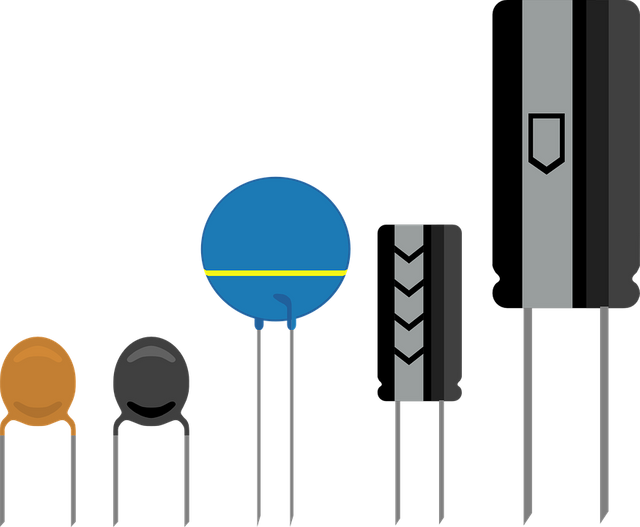
A capacitor is made of two metal plates insulated by a material called the dielectric. The dielectric is placed in between the metal plates to ensure that the metals don't touch. The dielectric is an electrical insulator, and it can be a plastic, vacuum, glass, ceramics etc. The metal plates are made of electrical conductors and can be silver, aluminium or tantalum metals; the plates are connected to a terminal wire which is connected to the rest of the circuit. Capacitors are widely found in electrical circuits. The image below shows symbols of capacitors found on most electronic circuits
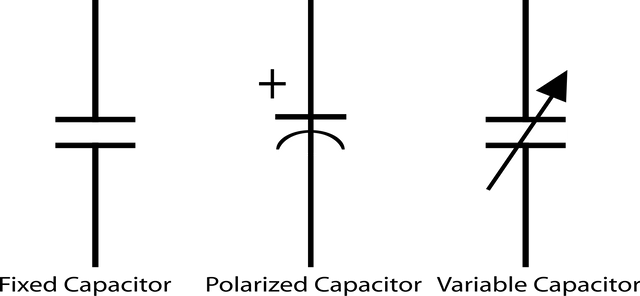
The capacitance of a capacitor is dependent on how it is constructed, for a higher capacitance in a capacitor, the small distance between the plates, a high permittivity dielectric material and a large plate area is required.
The equation for Capacitance is below
C = EA/d
Where;
C = Capacitance in farad
E = The permittivity of the dielectric
A = The area of plates overlap in square meters
d = Distance between plates in meters
In its simplest form, a capacitor is made of two conductors separated in the middle by an insulator known as dielectric, when current passes through a capacitor, the charges are stuck on the plate since it can not pass through the insulation (dielectric). Electrons (negatively charged particles) accumulates on one plate while proton ( positive particles). Explaining this further using Coulombs law.
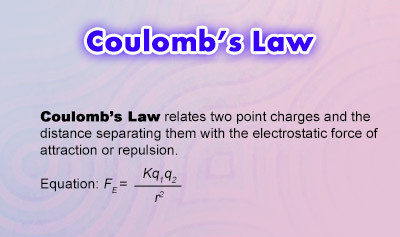
Where;
q1 = Quantity of charge on object 1 (in Coulombs)
q2 = Quantity of charge on object 2 (in Coulombs)
K = Is the Coulomb's law constant
r = Is the distance of separation between the two
From the above, a charge on one plate will exert a force on the free particles within the other plate, attracting like charges and repel. Hence, an equal and opposite charges will accumulate on the two plates, the insulator (dielectric) develops an electric field.
Energy Stored in a Capacitor
I am fascinated by looking at basic Physics principles and its relationship to a whole lot of things.
Work done: Work is said to be done when a force moves an object through a distance in the direction of the force. Work transforms energy from one form to another or transfers it from one place to another. The same work must be done in capacitors to increase the charge and voltage
For an increment of the voltage (V) and Charge (q) on a capacitor, Work must be done by the source of power to move charge from the negative plate to the positive plate against the opposing force created by the electric field.
That is; dW = Vdq
Where;
dW = Is the work required to move the charge
dq = Small increment of charge
V = Is the voltage of the capacitor
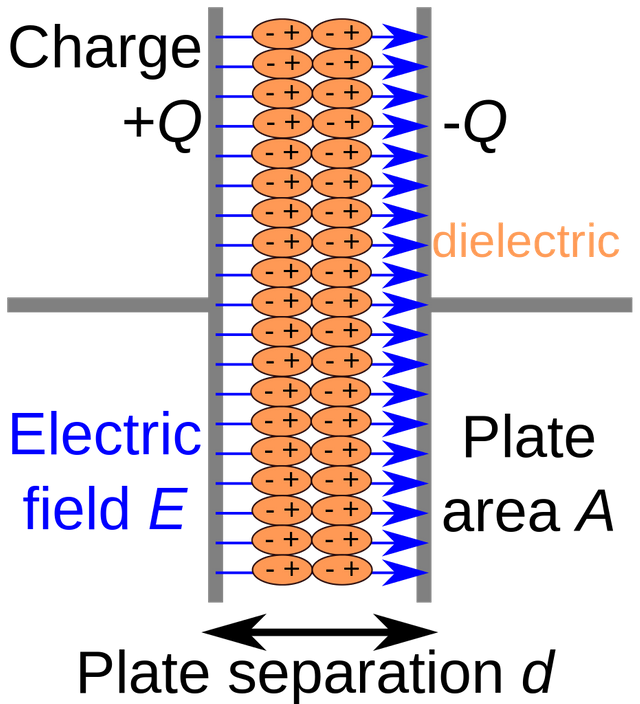
Since energy is not lost, the energy in a capacitor is stored in the electric field between the plates, and the total energy stored is equal to the work done in establishing the field. This energy is known as potential energy.
If a circuit that has e resistance between the plates is connected and the charge q is allowed to move from the positive plate to the negative plate, then work will be done on the external circuit by the charge moving under the influence of the electric field.
Cloud Capacitor Causing Lighting
I know that we might be wondering if this is a type of capacitor since I have not discussed types of capacitors. But, this is about what causes lighting and using it to explain capacitor further.
As Cloud moves in the atmosphere, the ice particles bump against each other and gain static electrical charge. Applying Coulomb's law, Like charges repel and unlike charges attracts. Thus, the positive charge moves to the top of the cloud while the bottom becomes negatively charged. Hence, a Capacitor is formed. As the clouds drift, The negative charge at the bottom repels positive charges ( Coulombs's law) causing the positive charge to move to the ground; and another capacitor is formed since air is a dielectric material. Over time, the cloud builds enough electrical potential energy that breaks the insulator (Air that serves as the dielectric) The breakdown of the insulator causes a giant spark that we see as lighting. Lighting can occur inside the cloud or between the cloud and the ground.
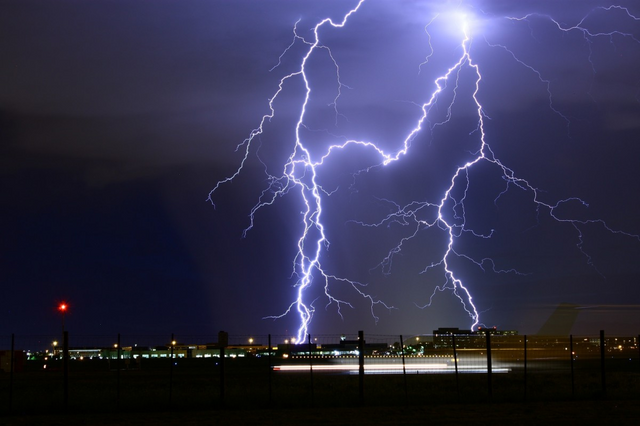
Capacitor Applications
Power
Capacitors have a wide range of application in power systems; They are used in half or full wave rectifiers to smooth the output. Capacitors can be connected in parallel in power circuits to shunt out current fluctuations. This is common in audio circuits where it is used to reduce power hum before feeding to the signal circuitry. In electricity distribution, capacitors are connected to 3-phase loads for power factor correction. This type of capacitors are measured in (Var) reactive power, and functions to reduce the effect of loads that are inductive such as electric motors and power lines making them appear more resistive.
Energy Storage
Since capacitors stores energy, it can be used like a temporary battery. Thus, capacitors can be used to maintain power in electronics while the power source is being changed. As I have explained that capacitors can store energy, supercapacitors can withstand much more charge and discharge cycles than conventional batteries, though they are much larger than normal batteries.
Capacitive Coupling an Decoupling
Capacitive coupling: Capacitors are used in circuits to block DC signals while passing AC in circuits. That is, separating AC and Dc signals. A decoupling capacitor is also known as bypass capacitor is used to protect one part of the circuit from another, e.g. reducing noise caused by other circuit components.
Today, I have come to share the knowledge that Capacitors are no a button and that they have a wide range of applications and found in almost all electronic circuits.
Thank you!
Being A SteemStem Member